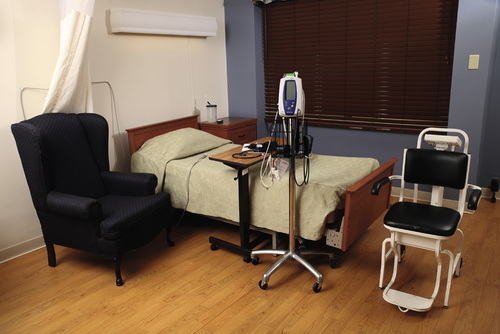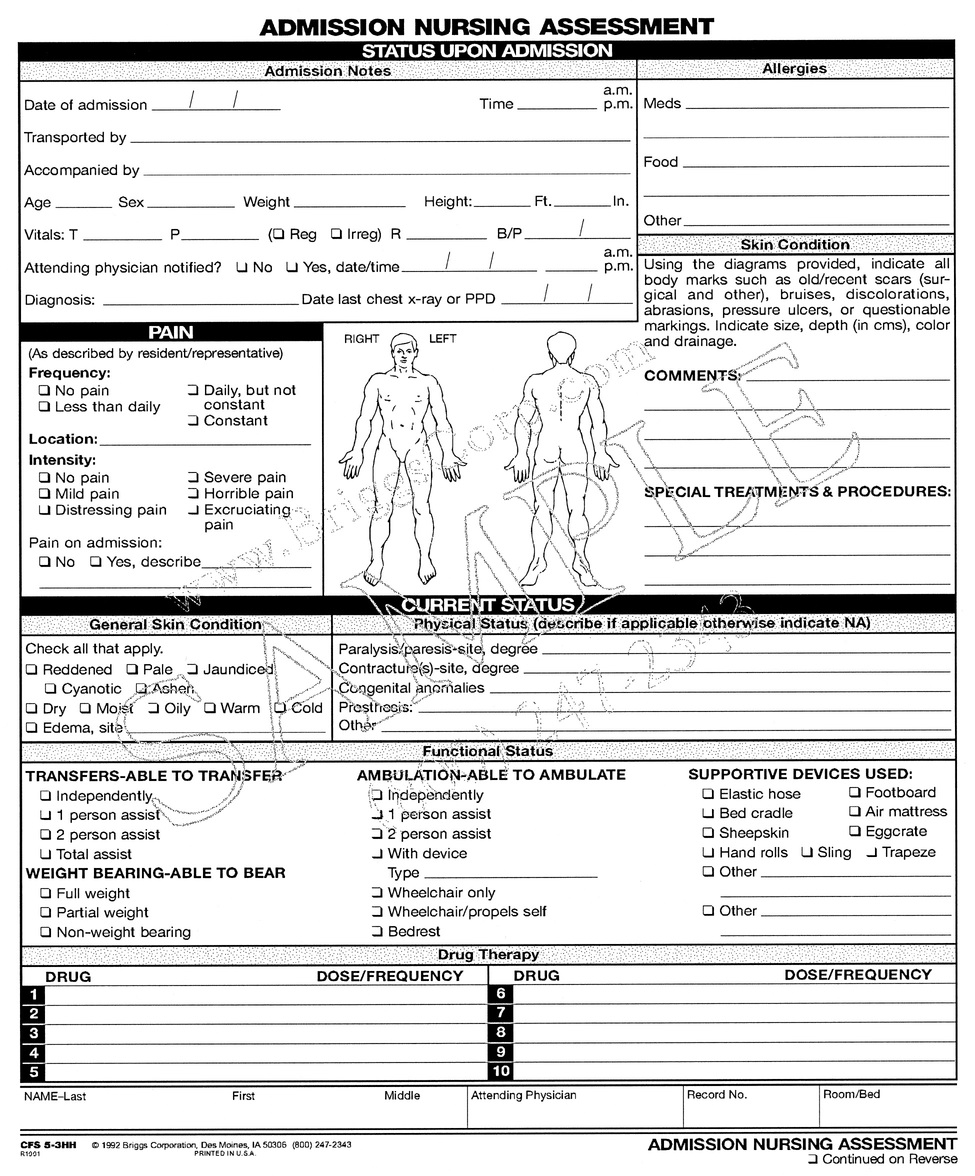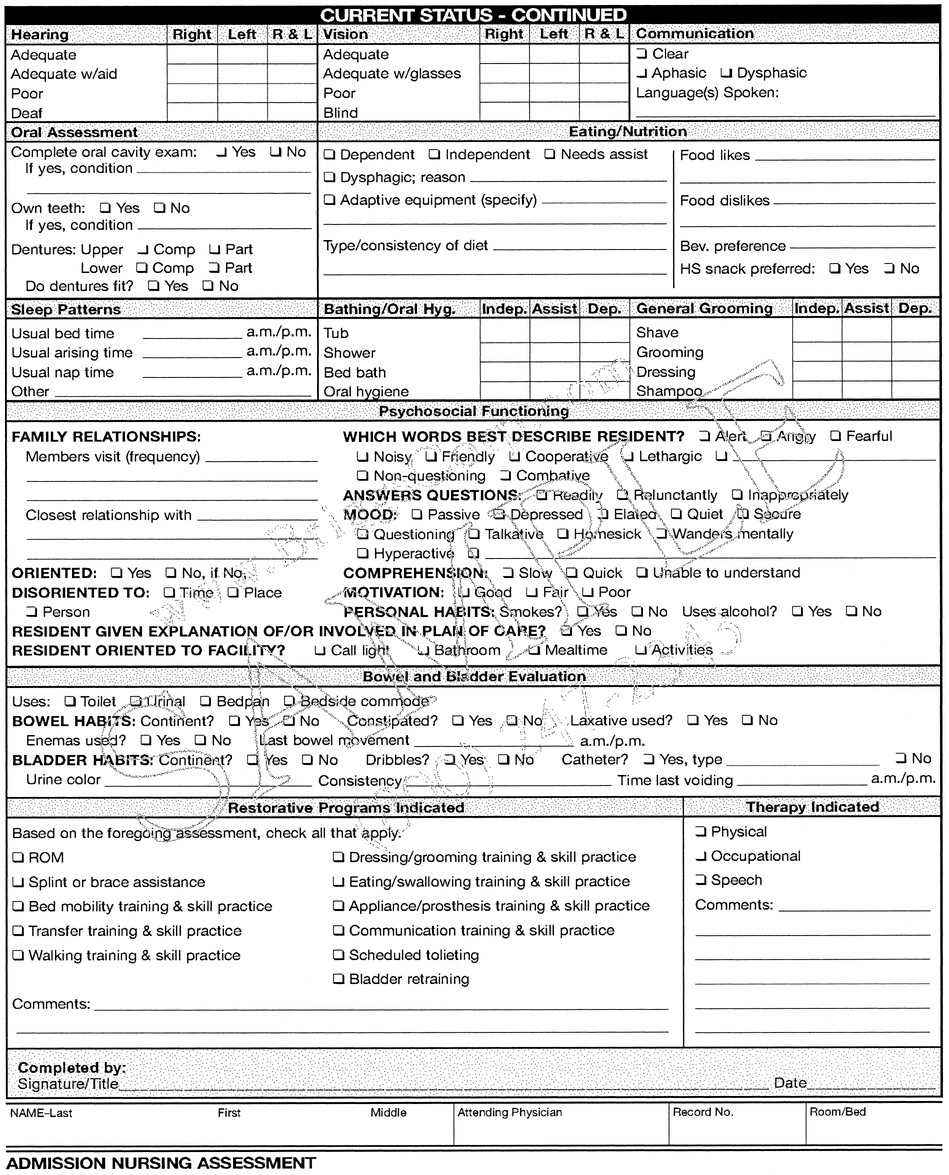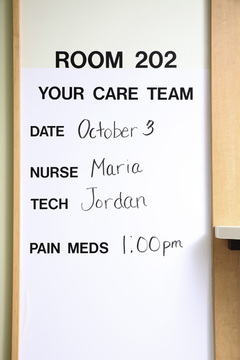Admissions, Transfers, and Discharges
Objectives
• Define the key terms and key abbreviations in this chapter.
• Describe your role in admissions, transfers, discharges, and moving the person to a new room.
• Explain how you can help the person and family feel comfortable in the health care setting.
• Identify the rules for measuring weight and height.
• Explain the reasons for moving a person to a new room within the agency.
• Perform the procedures described in this chapter.
• Explain how to promote PRIDE in the person, the family, and yourself.
Key Abbreviations
Admission is the official entry of a person into a health care setting. It causes anxiety and fear in patients, residents, and families. Worries and fears about serious health problems, treatments, surgeries, and pain are common.
Patients, residents, and families are in a new, strange setting. They may have concerns and fears about:
• Where to go, what to do, and what to expect
• Who gives care, how care is given, and if the correct care is given
• Being apart from family and friends
Moving to another room may cause similar concerns. So may transfer to another health care setting—hospital or nursing center. Discharge to a home setting is usually a happy time. However, the person may need home care.
Discharge and transfer are defined as follows.
• Discharge is the official departure of a person from a health care setting.
• Transfer is moving the person to another health care setting. In some agencies it also means moving the person to a new room within the agency.
Admission, transfer, and discharge are critical events. So is moving to a new room. The new room may be on another nursing unit. These events involve:
• Understanding and communicating with the person
• Communicating with the health team
• Respect for the person and the person’s property
See Focus on Long-Term Care and Home Care: Admissions, Transfers, and Discharges, p. 546.
See Teamwork and Time Management: Admissions, Transfers, and Discharges, p. 546.
See Delegation Guidelines: Admissions, Transfers, and Discharges, p. 546.
See Promoting Safety and Comfort: Admissions, Transfers, and Discharges, p. 546.
Admissions
The admission process usually starts in the admitting office. In hospitals, it may start in the emergency room (ER). Admitting staff or a nurse obtains information for the admission record. This includes the person’s identifying information—full name, age, birth date, and so on.
The person is given an identification (ID) number and ID bracelet (Chapter 13). The person or legal representative signs admitting papers and a general consent for treatment.
The admitting office tells the nursing unit when to expect a new patient or resident. The person’s room and bed number are given. In some agencies, the person can walk to the room if able. Most persons require transport by wheelchair or stretcher.
See Focus on Long-Term Care and Home Care: Admissions.
 Preparing the Room
Preparing the Room
You prepare the room before the person arrives. Figure 32-1 shows a room ready for a new resident.

See procedure: Preparing the Person’s Room.
Admitting the Person
A nurse usually greets and escorts the person and family to the room. The nurse may ask you to do so if the person has no discomfort or distress.
Admission is your first chance to make a good impression. You must:
• Greet the person by name and title. Use the admission form to find out the person’s name.
• Introduce yourself by name and title to the person, family, and friends (Fig. 32-3).
• Make roommate introductions.
• Act in a professional manner.
See Focus on Long-Term Care and Home Care: Admitting the Person.
 The Admission Procedure.
The Admission Procedure.
During the admission procedure the nurse may ask you to:
• Collect some information for the admission form.
• Measure the person’s weight and height.
• Measure the person’s vital signs.
• Complete a clothing and personal belongings list.
• Orient the person to the room, the nursing unit, and the agency.
See procedure: Admitting the Person.








